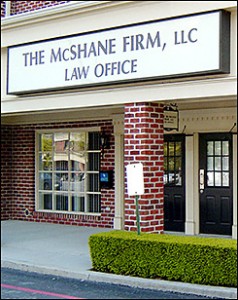Every Friday we take a look at some of the most commonly asked questions about Pennsylvania DUI so we can clear up any misconceptions and provide you with the most up-to-date and accurate information about PA DUI laws and related topics. Today:
Dear PA DUI Lawyer,
My mother is 54 and she was arrested yesterday and charged with a DUI. She’s diabetic and her sugar was low so she pulled over to the shoulder of the road so she could slowly make it home. The cops stopped her arrested her and when they took her to the station they tested her on a breath machine and they said she was over the limit?! But she never drinks! What’s going on here? I’m so confused.

Diabetics being falsely charged for DUI is an issue that is fairly common. According to some estimates one in seven drivers on the road in Pennsylvania are diabetics. The unfortunate thing is that police officers receive very little DUI training and often misinterpret medical conditions like2 as DUI. This coupled with the fact that the breath machines used all over PA are woefully inaccurate and do not uniquely measure ethanol (drinking alcohol) as opposed to other forms of alcohol. It is a universal design flaw, which creates a false positive in your mother’s case.
The condition you mother was suffering from is called Hypoglycemia- when blood sugar is abnormally low. The police probably looked at her sluggish behavior and interpreted that as being drunk. I have argued on this blog and all across PA that police officers need to be better trained so they can recognize health conditions like diabetes and understand that this is not a DUI.
On top of the obvious human failure here, is an amazing technological failure of the breath machine. To understand the problem first you’ll have to understand how breath machines work.
Breath machines measure alcohol in an indirect way. The machine sends infrared energy in the form of a beam through the breath sample and measure how these beams are absorbed. Once the light is absorbed the machine thinks “this must be alcohol”. The more light that is absorbed, the more ethanol (drinking alcohol) the machine reports. The problem here is that ethanol is not the only compound that absorbs infrared beams this way at the wavelengths examined by these machines. In fact, any chemical compound that contains the methyl group will absorb the beams much in the same way ethanol does. This includes chemicals like acetone and isopropyl alcohol.
The problem here is that when the body experiences low blood sugar, as is the case with many diabetics, the body changes its chemical processes and extra acetone is created as a bi-product (ketones). The person is in a state of ketoacidosis. It has been well documented that acetone created as the result of low sugar can create an emission of ketones which then results in emission of isopropyl alcohol, creating a false positive on breath machines like the Intoxilyzer 5000 (commonly found in Harrisburg and all over PA).
Your best bet here is to find a good defense attorney to review your mother’s DUI case. If you are in Central PA, please call The McShane Firm at 1-866-MCSHANE to meet the best DUI lawyers in PA.
Please remember to forward this post to any diabetic you know so that they are aware of this condition.
If you would like to ask a question, please submit it via the contact us link.
Diane Inciardi says:
“Hyperglycemia” a very high blood sugar, causes diabetic ketoacidosis. My son was diagnosed with type 1 (insulin-dependent) diabetes when he was 6 and has been hospitalized five times with diabetic ketoacidosis from extremely “high” blood sugars.